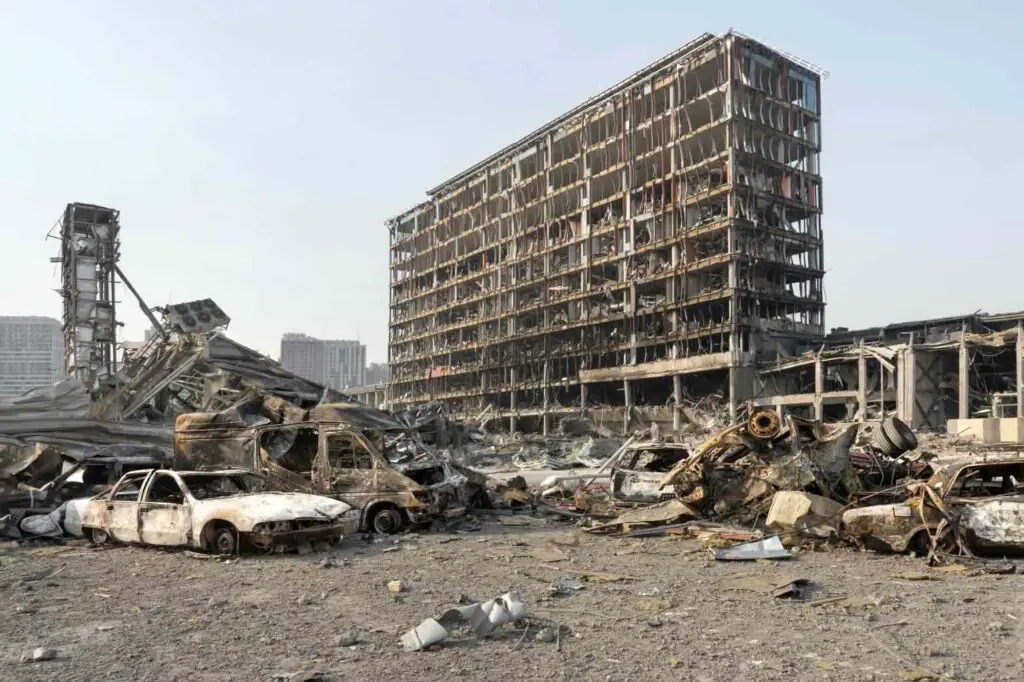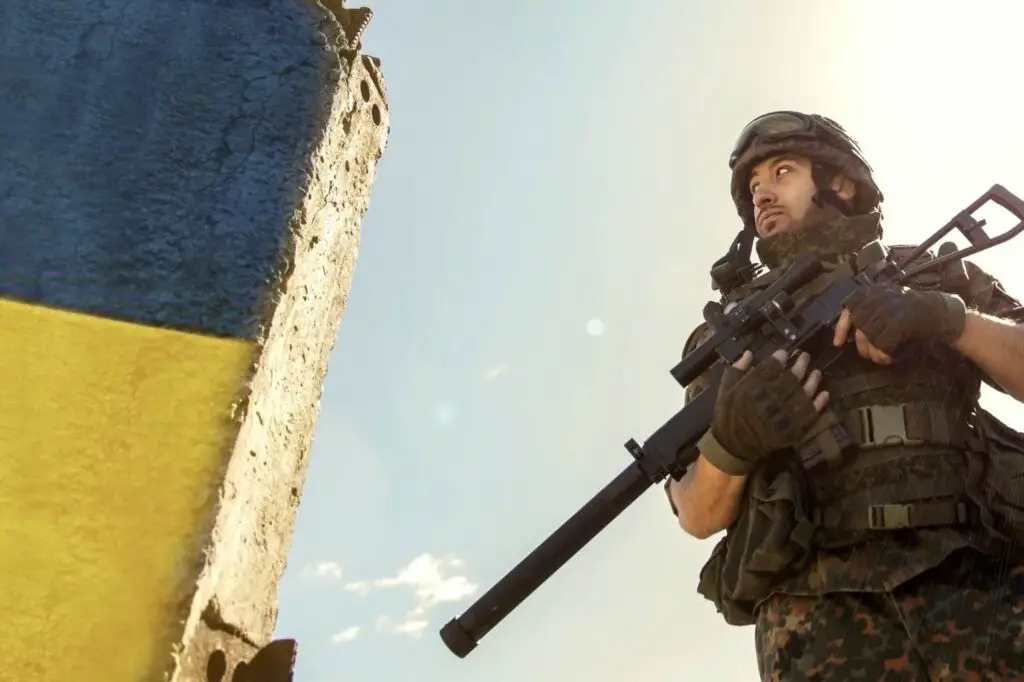Throughout history, human beings have been involved in conflicts for various reasons. These conflicts have shaped the world as we know it today, influencing geopolitics, societies, and even the environment.
This article will explore the multifaceted reasons behind wars and conflicts, examining how past events, socio-economic factors, and technological advancements continue to affect modern-day disputes.
Table of Contents
- Historical Context and the Seeds of Conflict
- Socio-Economic Factors and Inequality
- Nationalism and Ideology
- Global Politics and Power Dynamics
- Related Questions
Historical Context and the Seeds of Conflict
Throughout human history, patterns of conflict have laid the foundation for the complex web of modern disputes we see around the globe today. From ancient empires clashing over territory to ideological battles that defined the 20th century, the roots of present tensions can often be traced back through time, illustrating how the past directly influences the present.
The essence of conflict, at its core, often revolves around fundamental human desires: the quest for resources, power, and cultural or religious dominance. For instance, the Roman Empire’s expansion was driven by the need for resources and territory. This theme resonates in many of today’s conflicts, where countries or groups vie for control over oil, water, or strategic lands.
The echoes of these ancient motivations for conflict are seen in modern-day disputes in regions rich in natural resources or of strategic importance.
Meanwhile, the religious and cultural clashes that characterized the Crusades have contemporary parallels in conflicts where cultural identity, religious belief, and societal values are at stake. Such struggles can be deeply entrenched, with historical grievances fueling a cycle of retaliation and violence that is difficult to break.
The Israeli-Palestinian conflict, for example, is deeply rooted in historical claims to land and cultural and religious identity, showcasing how past and present are intertwined.
The rise and fall of empires have also set the stage for many modern conflicts. Colonialism’s legacy, where European powers carved up continents according to their interests, disregards indigenous populations and cultural boundaries, leading to current national borders that often cut through ethnic or cultural lines, sowing seeds of discord.
The drawing of arbitrary borders in the Middle East is a prime example. The Sykes-Picot Agreement of 1916 disregarded the cultural, religious, and tribal affiliations of the region’s inhabitants, contributing to ongoing tensions today.
The 20th-century World Wars further shaped the geopolitical landscape. The Treaty of Versailles, ending World War I, imposed harsh penalties on Germany, contributing to economic distress and political instability, leading to World War II.
The Cold War that followed saw the world divided into ideological camps, with proxy wars in Korea, Vietnam, and Afghanistan setting the stage for current international relations and conflicts.
Understanding these historical contexts is crucial for comprehending why modern conflicts unfold the way they do. It highlights the importance of addressing underlying historical grievances and the deep-seated human needs that fuel disputes.
As we navigate these turbulent times, acknowledging the impact of history on contemporary conflicts is a vital step toward fostering dialogue, understanding, and, ultimately, peace. It reminds us that the solutions to today’s challenges lie in diplomatic and military strategies and understanding and learning from our shared history.

Socio-Economic Factors and Inequality
In exploring the intricate web of socio-economic factors driving global conflicts, we pivot away from the grand narratives of history and empires to the underlying, often overlooked drivers of human discord.
At the heart of many contemporary clashes lie disparities in wealth, access to basic needs, and the unequal distribution of power within societies. These elements, deeply rooted in the socio-economic fabric of nations, often spark fires that rage into broader conflicts, illustrating the critical need for an in-depth understanding of these dynamics to pave the way toward sustainable peace.
Economic Inequality as a Catalyst for Conflict: Economic disparity is a towering pillar among the socio-economic factors fueling conflicts. When wealth is concentrated in a few’s hands, leaving the vast majority languishing in poverty, the resulting inequality can become a breeding ground for unrest. Individuals and groups, feeling marginalized and desperate, may turn to conflict as a means to voice their frustrations and demand change.
This dynamic is not confined to low-income nations; even in wealthier countries, widening gaps between the wealthy and the poor have sparked movements demanding economic justice.
Unemployment and the Youth Bulge: A critical aspect often intertwined with economic inequality is high unemployment, particularly among the youth. Countries with significant populations of young people who face bleak job prospects and limited opportunities are ripe for instability.
The frustration of young individuals, who see no path to a fulfilling future, can easily be channeled into violent protest or support for radical movements promising change. The so-called “youth bulge” in several regions worldwide is thus not just a demographic statistic but a potential socio-economic tinderbox.
Resource Scarcity and Environmental Stress: The competition for dwindling natural resources further fuels conflict. Water scarcity, diminishing arable land, and the impact of climate change are not just environmental issues—they are potent socio-economic threats that can exacerbate tensions between communities and nations.
As populations grow and resources become scarcer, disputes over access to water or fertile land can escalate into violent confrontations. Moreover, environmental stress pushes communities into direct competition, often reviving old grievances or sparking new ones.
The Role of Governance and Corruption: Socio-economic governance issues complicate the conflict landscape. A lack of transparency and ineffective governance create environments without addressing socioeconomic inequalities, allowing them to fester into conflicts.
When citizens lose trust in their leaders or feel the system is rigged against them, the social contract is broken, leading to unrest. Conversely, good governance can mitigate many socioeconomic disparities that fuel conflicts, underscoring the importance of integrity and accountability in leadership.
Urbanization and Social Fragmentation: Urbanization, a major global trend, brings unique challenges that can contribute to conflicts. As people flock to cities in search of opportunities, the rapid growth can outstrip the availability of jobs, housing, and services, leading to pockets of deep poverty and social exclusion.
Furthermore, the anonymity and diversity of urban life, while a source of vibrancy, can also lead to social fragmentation, where communities become isolated and mistrustful of one another. In such settings, minor incidents can quickly escalate into broader clashes.
In the complex interplay of socio-economic factors fueling conflicts, it’s clear that addressing the root causes requires a multifaceted approach. From ensuring equitable economic development and providing education and employment opportunities to managing natural resources sustainably and fostering inclusive governance, the path to peace involves tackling the socio-economic disparities that underpin much of the world’s unrest.
Understanding these dynamics is crucial for anyone seeking to comprehend the modern conflict landscape and contribute to building a more just and peaceful world.

Nationalism and Ideology
In our journey to unravel the complex tapestry of factors contributing to war, we now turn our lens toward more contemporary issues that, perhaps subtler than the direct conquests of ancient empires, are no less impactful in shaping the global conflict landscape.
These issues include economic inequality, the youth bulge, resource scarcity, governance and corruption, and urbanization. Each of these elements, intertwined with nationalism and ideology, plays a crucial role in the modern-day dynamics of war.
Economic inequality, a seemingly invisible hand, casts long shadows across nations and regions. The stark divide between the haves and the have-nots has only widened in the face of globalization. When a significant portion of a population struggles for necessities while a small elite enjoys vast wealth, resentment brews.
Nationalism can often channel this resentment towards external “enemies” as leaders deflect blame and harness discontent to rally support. Political, religious, or cultural ideologies can justify or exacerbate these inequalities, creating fertile ground for conflict as groups vie for a larger share of the pie or seek to upend the existing order altogether.
The phenomenon of the “youth bulge” further complicates the picture. Many regions, especially in developing countries, have disproportionately large populations of young people. When these youthful energies are not met with ample employment opportunities, frustration and restlessness ensue.
Unemployment and underemployment present not only economic challenges but also erode the social fabric, making young people susceptible to radical ideologies. Nationalistic fervor can offer a sense of purpose or belonging, driving some into the arms of militant groups or contributing to civil unrest.
Resource scarcity, compounded by environmental stress, adds another layer to contemporary conflicts’ complexity. As nations and communities grapple with shortages of water, arable land, and other critical resources—exacerbated by climate change—tensions rise.
Competition over these dwindling resources can escalate into conflict, with nationalism and entrenched ideologies often framing these struggles as survival or existential threats. The narrative of protecting one’s nation or group against others vying for the same resources can both ignite and intensify conflicts.
Governance and corruption are at the root of many of these issues. When governments fail to provide for their people’s basic needs, protections of their population drain resources away from those who need them most, and the social contract is broken.
In such a vacuum, nationalism and radical ideologies can thrive, presenting themselves as alternatives to the status quo. The promise of a new order that reduces inequalities and brings about “justice” can be a powerful mobilizer for war.
Finally, urbanization and social fragmentation present unique challenges in the modern era. As people migrate to cities for better opportunities, they are often met with overcrowding, poverty, and isolation.
Urban life’s anonymity and impersonality can lead to a sense of disconnection, driving individuals to seek identity or community through nationalism or ideological groups. These urban pressures can exacerbate tensions, making cities flashpoints for conflict.
As we navigate these multifaceted issues, the interplay of nationalism and ideology with economic inequality, the youth bulge, resource scarcity, governance, and urbanization becomes clear. While distinct from the direct conquests of ancient times, these contemporary challenges are deeply interwoven into the fabric of modern conflicts.
Understanding them is crucial in creating pathways to peace, for it is only by addressing these underlying causes that we can hope to untangle the complex web of factors that contribute to war.

Global Politics and Power Dynamics
Global politics and power dynamics significantly shape the landscape of war and conflict, shaping why wars start, how they are fought, and eventually resolved. In the intricate dance of international relations, these factors play pivotal roles, often dictating the pulse and direction of global tensions and alliances.
Economic inequality between nations often serves as a match that ignites larger conflicts. More significant disparity, marked by the glaring divide between the wealth of nations, can lead to unrest.
Countries grappling with poverty and economic instability might see conflict as a pathway to resources or a means to assert their stance on the world stage, challenging the status quo and demanding a reevaluation of global economic structures.
Nationalism and ideology, too, forge powerful motivations for conflict. When a nation’s sense of identity and purpose coalesces into a unified, often sincere belief in its superiority or unique destiny, a country can engage in wars of expansion, influence, or survival.
Ideological warfare, whether rooted in differing political systems or interpretations of cultural or religious doctrine, underscores many of the 20th and 21st centuries’ most significant conflicts.
The youth bulge, where a significant portion of a nation’s population comprises young people, can also precipitate unrest. Countries that cannot provide adequate jobs, opportunities, or outlets for their youthful populations may channel these energies into militaristic or revolutionary movements, often manipulated by charismatic leaders with agendas that lead to conflict.
Resource scarcity and environmental stress present urgent catalysts for modern warfare. As nations face dwindling water supplies, arable land, and essential minerals, the pressure to secure these resources can lead to conflicts that span borders, destabilizing entire regions.
Climate change exacerbates these tensions, adding urgency to the struggle for survival and control in a rapidly changing environment.
The role of governance and corruption in fostering conflict cannot be overstated. When governments fail to provide for their people’s basic needs and rights or when kleptocracy and corruption drain public resources for personal gain, the seeds of discontent are sown.
Such governance issues can undermine national unity, making countries more prone to internal conflicts and civil wars, which can quickly draw in international actors with their agendas.
Urbanization and social fragmentation also play into the hands of conflict. As cities swell and rural communities empty, the rapid pace of urban life and the breakdown of traditional social structures can lead to alienation and disenfranchisement. In such environments, extremist ideologies can take root, with urban centers becoming breeding grounds for radicalization and violence.
In summary, global politics and power dynamics intertwine with economic, social, and environmental factors to shape the conditions under which wars are fought. Understanding these influences is crucial in navigating the complex landscape of international relations and working towards more peaceful, equitable solutions to world conflicts.
These themes underscore the delicate balance of power and the challenges facing our global community, highlighting the urgent need for cooperative, forward-thinking approaches to governance, resource management, and conflict resolution.
As we have seen, the reasons behind wars and conflicts are complex and varied, intertwining historical legacies with socio-economic disparities and technological advancements.
Understanding these factors is crucial for addressing the root causes of conflict and moving towards a more peaceful world. By acknowledging the lessons of history and the challenges of the present, we can work together to build a future where disputes are resolved not through violence but through cooperation and dialogue.
At A Bus On A Dusty Road, we talk about history, travel, life, sailing, and ex-pat living. We are all about “Living Life As A Global Citizen.” We explore social, cultural, and economic issues and travel.
We would love to have you be part of our community. Sign up for our newsletter to keep up-to-date by clicking here. If you have any questions, you can contact me, Anita, by clicking here.
Listen to our Podcast called Dusty Roads. You can find it on all major podcast platforms. Try out listening to one of our podcasts by clicking here.
Subscribe to our A Bus On A Dusty Road YouTube Channel with great videos and information.
Related Questions
What U. S Companies Profited During The Vietnam War?
During the Vietnam War, many U.S. companies profited from the Vietnam war. Some of these companies were heading toward bankruptcy, but their involvement in the Vietnam war helped make them profitable. For many others, they earned millions of dollars each year in profits from the war that helped ensure they continued to be successful or even thriving companies.
By clicking here, you can discover What U. S Companies Profited During The Vietnam War?
Could America Have Won The Vietnam War?
America could not have won the Vietnam war as it never won the hearts and minds of the Vietnamese people. The Americans even had difficulty controlling the Vietnamese people in Southern Vietnam, as many were disillusioned with the Southern Vietnamese government. Ho Chi Minh, the leader of North Vietnam, fully understood that another foreign power would not control the Vietnamese heart and soul.
By clicking here, you can discover Could America Have Won The Vietnam War?
What Was The Main Reason For US Involvement In Vietnam?
The main reason for the involvement of the United States in the Vietnam War was the belief in the Domino theory; the Domino theory was a principle used to describe the effects on the world if Vietnam fell to communism. The idea was that if Vietnam became communist, the rest of Asia, New Zealand, and Australia would eventually become communist. At the time, American leaders felt they were fighting for the survival of democracy throughout the world.
By clicking here, you can learn more by reading What Was The Main Reason For U.S. Involvement In Vietnam?


